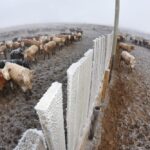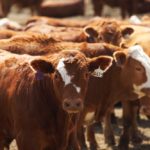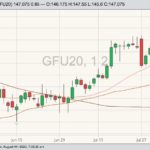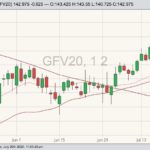Reading Time: 2 minutes Compared to last week, western Canadian yearling prices were down $4-$6 on average; however, mid-weight and lighter calves traded $4 lower to as much as $8 higher. The market was extremely variable for calves. Early in the week, prices in the Lethbridge area were actually $10 above values from seven days earlier but this faded […] Read more

Klassen: Feeder market experiencing bottoming behaviour

Klassen: Feeder market remains under pressure
Pre-election commodity trading in 'risk-off' mode
Reading Time: 2 minutes Compared to last week, western Canadian feeder cattle markets traded $2-$5 lower on average; calves under 650 lbs. appeared to trade $3-$8 lower with significant pressure on the weight category between 550 and 650 lbs. Moderate demand surfaced on quality yearlings but major operations appeared to back away from the cattle in the heavier weight […] Read more

Klassen: Weather, COVID, feed grains pressure feeder market
Reading Time: 2 minutes Compared to last week, western Canadian yearling prices were $2-$4 lower on average; calves traded $2 to as much as $6 below week-ago levels. Southern Alberta received its first snowfall of the season last week, which hindered demand for fresh replacements. Feedlots always incorporate a risk discount when the first snowfall of the year materializes, […] Read more

Klassen: Rising feed grains pressure feeder market
Reading Time: 2 minutes Compared to last week, western Canadian yearling markets traded $3-$6 lower with some reports showing prices as much as $10 lower. Calves traded $2-$4 below week-ago levels; however, the market will be more defined next week, with many auction barns scheduling feature calf sales in the major feeding areas of Alberta. Feeding margins in the […] Read more

Klassen: Yearling prices on fire
Canada's cattle herd remains in contraction stage
Reading Time: 2 minutes Compared to last week, yearlings coming off grass traded $3-$5 higher; backgrounded yearlings were $1-$3 higher on average while calf markets were relatively unchanged. February and April live cattle futures closed marginally lower for the week; however, fed cattle basis levels from U.S. packers are very strong for winter and spring. This appears to be […] Read more

Klassen: Yearling demand remains firm
Reading Time: 2 minutes Compared to last week, western Canadian yearlings fresh off grass traded steady to $2 higher; backgrounded yearlings were relatively unchanged. The calf market was too thin to quote. Major feedlot operators set the price structure and were once again very aggressive. While many feedlots are backed up with market-ready supplies of fed cattle, some feedlots […] Read more

Klassen: Weaker feed grains drive feeder market higher
Reading Time: 2 minutes Compared to last week, western Canadian yearlings traded $2-$4 higher. This was the first week of the fall yearling run with larger groups of quality packages and there was no shortage of buying enthusiasm. Heavier yearlings were readily trading at 52-week highs. Feed barley prices collapsed in southern Alberta as the harvest started in the […] Read more

Klassen: Strong demand underpins yearlings
Reading Time: 2 minutes Compared to last week, yearlings traded steady to $4 higher on average; calves traded $2-$4 lower, although light volumes made the market hard to define. All eyes were on feeder cattle futures, which closed up nearly $4 for the week. This set the direction in Western Canada. Auction barns in Manitoba and Saskatchewan remain in […] Read more

Klassen: Feeder cattle market drawing attention
Reading Time: 2 minutes Compared to last week, Western Canadian yearling prices were $2 to $4 higher while calf markets traded $2 to $4 on either side of unchanged. U.S. prices were also up $2 to $4 which lent support to Canadian domestic values. Volumes remain thin across the prairies; many producers are busy with silage operations and pasture […] Read more

Klassen: Feeder market looking firm for fall
Reading Time: 2 minutes The western Canadian feeder market was hard to define last week due to the small volumes. Small groups under 10 head were quite common and in many cases, one to three head were running through the ring. Discounts were quite severe on these stragglers; however, quality feeder cattle traded at similar levels to last week. […] Read more


